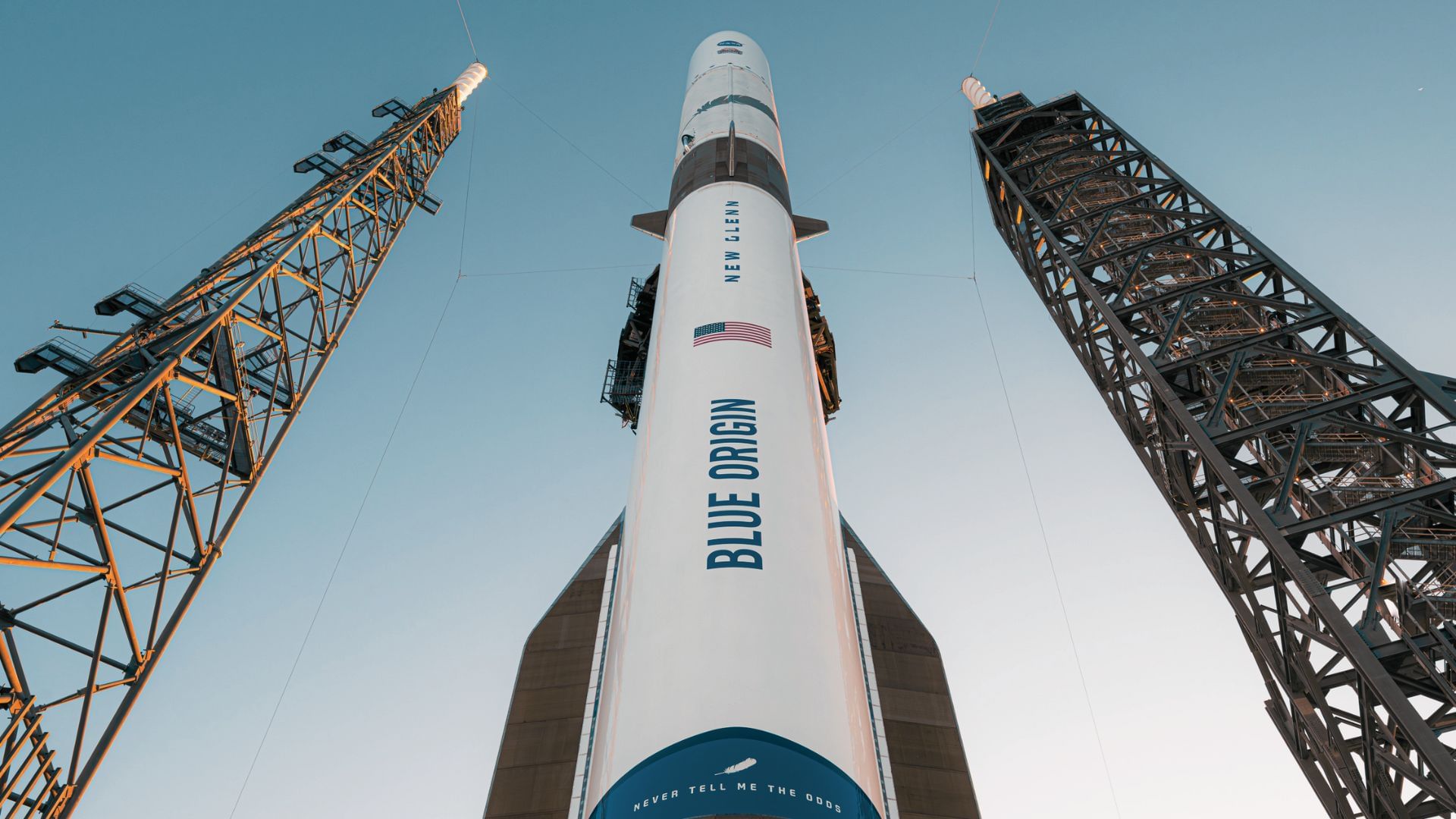New Delhi: Blue Origin deferred the launch of its New Glenn rocket to launch a pair of satellites forming NASA’s ESCAPADE mission because of the ongoing severe geomagnetic storm. Blue Origin said, “New Glenn is ready to launch. However, due to highly elevated solar activity and its potential effects on the ESCAPADE spacecraft, NASA is postponing launch until space weather conditions improve. We are currently assessing opportunities to establish our next launch window based on forecasted space weather and range availability.” The launch of the rocket was previously scrubbed on 10 November due to high-altitude clouds. Blue Origin now plans to launch the mission on 13 November.
The fully stacked rocket is at Launch Complex 36 at the Cape Canaveral Space Force Station in Florida, and is packing in a technology demonstration mission for Viasat in addition to the twin satellites for NASA’s Escapade mission. This developmental hardware is in support of NASA’s Communications Services Project. Blue Origin plans to return the reusable first stage booster, dubbed ‘Never Tell me the Odds’ to an ocean platform named Jacklyn. The barge departed for the targeted landing zone last week. Blue Origin plans to recover the first stage booster and refurbish it before another flight. The second stage will deploy the ESCAPADE satellites before being safed for disposal.
NASA’s ESCAPADE Mission
NASA’s Escape and Plasma Acceleration and Dynamic Explorers (ESCAPADE) mission consists of a pair of spacecraft that are headed to Mars to assess and monitor how space weather influences the Red Planet. The observations by the satellites will play a crucial role in planning future missions to Mars, including crewed missions to the surface. The twin orbiters will simultaneously monitor Mars from different locations, and will track the evolution of the weak magnetosphere of Mars. Deep in the interior of the Earth, the solid iron core of the planet is rotating, surrounded by a swirling ocean of iron and nickel, that produce the geomagnetic field of the Earth and trap energetic particles. The planetary core of Mars cooled billions of years ago, shutting down the internal dynamo, because of which the Red Planet does not possess a protective global geomagnetic field. As a result Solar Activity continuously strips away the tenuous Martian atmosphere.
